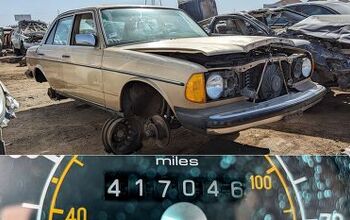Can Maserati Replace Ferrari? (Or at Least Ferrari's Profits)

With the imminent spin-off of Ferrari, Fiat Chrysler Automobiles boss Sergio Marchionne may be looking for a cash cow to help keep lagging brands at FCA afloat.
A story by Automotive News on Wednesday wonders aloud if Maserati will replace Ferrari as FCA’s marquee brand with double-digit profit margins. Behind Marchionne’s plan to sell the world on Jeep and Alfa Romeo, he would need to sell the world on the idea that Maserati is an exclusive, luxury brand, the article says.
Of course, that may be tough to do considering Maserati has always had a reputation for being Ferrari’s nerdy suburban cousin.
At issue isn’t the Trident brand’s identity, but rather its bottom line. When Ferrari leaves the FCA family later this year, it’ll likely be taking some debt but also a lot of cash. Ferrari turns a profit each year, upwards of $500 million, for parent-company FCA. Money like that is hard to replace.
Maserati comes close, according to the story. Despite starting at $69,800 for an entry Ghibli, Maserati manages 10 percent margin on its cars compared to Ferrari’s 13 percent. Maserati’s volume production is also roughly 6 times that of Ferrari’s, but refining Maserati’s image from famously fussy to drop-dead desirable could be a tall task.
According to Autodata Corp., sales of the Ghibli have slid considerably since its introduction in 2013 and dealers have offered more than $9,500 in incentives for the mid-sized luxury car.
Still, Maserati is boosting its dealership presence in the U.S. by around 20 percent this year to 125 dealers and their luxury Levante SUV should be unveiled at Detroit’s North American International Auto Show.
“They’ve got a hell of a lot to build on,” Joe Phillippi, president of AutoTrends Inc., a consulting firm in Andover, N.J., told Automotive News. “But it’s incredibly expensive to play the game. Marchionne can’t afford to stumble. With the volume numbers he’s trying to generate, he’d better not miss.”
Maserati has grown considerably in the U.S. thanks to a larger portfolio and growing dealership network.

More by Aaron Cole
Latest Car Reviews
Read moreLatest Product Reviews
Read moreRecent Comments
- ToolGuy 9 miles a day for 20 years. You didn't drive it, why should I? 😉
- Brian Uchida Laguna Seca, corkscrew, (drying track off in rental car prior to Superbike test session), at speed - turn 9 big Willow Springs racing a motorcycle,- at greater speed (but riding shotgun) - The Carrousel at Sears Point in a 1981 PA9 Osella 2 litre FIA racer with Eddie Lawson at the wheel! (apologies for not being brief!)
- Mister It wasn't helped any by the horrible fuel economy for what it was... something like 22mpg city, iirc.
- Lorenzo I shop for all-season tires that have good wet and dry pavement grip and use them year-round. Nothing works on black ice, and I stopped driving in snow long ago - I'll wait until the streets and highways are plowed, when all-seasons are good enough. After all, I don't live in Canada or deep in the snow zone.
- FormerFF I’m in Atlanta. The summers go on in April and come off in October. I have a Cayman that stays on summer tires year round and gets driven on winter days when the temperature gets above 45 F and it’s dry, which is usually at least once a week.

































Comments
Join the conversation
I don't "bleed purple" like all of the Elder HS guys, we are a St Xavier Bomber household. My dad bitched a blue streak when tuition was $1500 my senior year, in the 80s. Our senior will be costing us nearly $15K next year...it'll be cheaper when he goes to college.
Hahaha, Cincinnati can be a smidge provincial. Shoot, I could pay cash for a Maserati with the money I've spent on Catholic education. And a Porsche too...